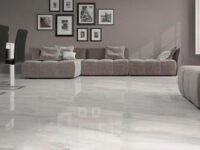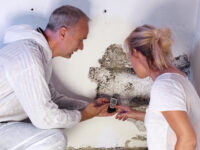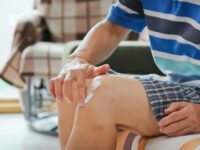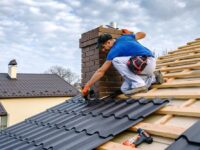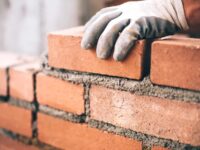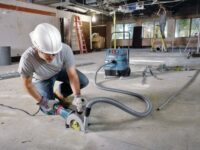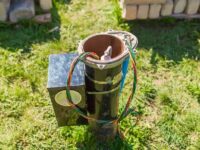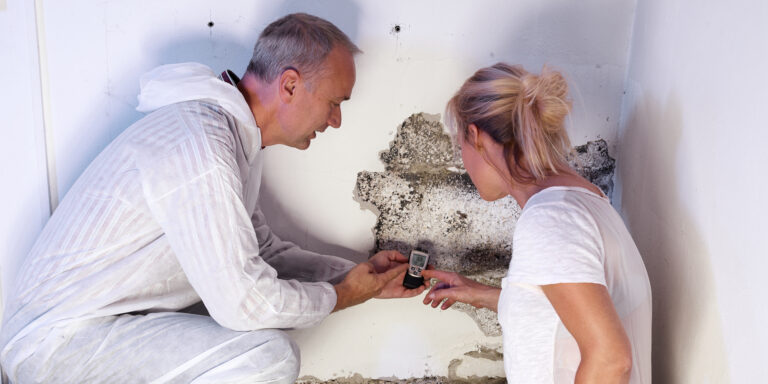Key Takeaways:
- Mold can have serious health effects, especially for individuals with allergies, asthma, or compromised immune systems.
- Signs of mold infestation include visible mold growth, musty odor, water stains, peeling or bubbling paint, and excessive humidity or condensation.
- Mold can cause significant damage to your home if left untreated.
- Hiring a professional mold remediation service is often the best course of action.
- Consider certifications, references, insurance coverage, and written estimates when hiring a mold remediation service.
- The process of professional mold remediation involves assessment, containment, removal and cleaning, drying and dehumidifying, repair and restoration, and preventive measures.
- If the mold problem is minor, DIY mold removal can be attempted using protective gear, containment measures, mold removal products, scrub brushes, and proper ventilation.
- To prevent mold growth, address sources of moisture, repair leaks promptly, maintain proper ventilation, and control indoor humidity levels.
- After mold remediation, assess and repair any damage caused by mold, clean and sanitize the home, and maintain a mold-free environment through regular cleaning, fixing leaks, controlling humidity, and proper ventilation.
Understanding the Dangers of Mold
Mold is a common issue that many homeowners face, but it can also be a dangerous one. Understanding the dangers of mold is crucial for protecting your health and your home. Mold is a type of fungus that grows in damp, dark, and humid environments. It reproduces by producing spores that can easily become airborne and spread throughout your home.
1. The Hidden Health Risks of Mold Exposure
Exposure to mold can have serious health effects, especially for individuals with allergies, asthma, or compromised immune systems. Mold spores can cause allergic reactions, respiratory problems, and even infections in some cases. Common symptoms of mold exposure include coughing, sneezing, wheezing, itchy eyes, and skin irritation.
Furthermore, certain types of mold, such as black mold (Stachybotrys chartarum), produce mycotoxins that can be harmful if inhaled or ingested. Prolonged exposure to mycotoxins can lead to more severe health issues, including chronic respiratory conditions, neurological problems, and even organ damage.
2. Identifying Common Signs of Mold Infestation
Mold can often be difficult to spot, as it grows in hidden and hard-to-reach areas. However, being vigilant and knowing the common signs of mold infestation can help you identify the problem early on. Some of the signs to look out for include:
- Visible mold growth on surfaces such as walls, ceilings, or floors.
- A musty odor, especially in damp areas like basements or bathrooms.
- Water stains or discoloration on walls or ceilings.
- Peeling or bubbling paint or wallpaper.
- Excessive humidity or condensation in your home.
3. The Long-Term Effects of Mold on Your Home
In addition to the health risks, mold can also cause significant damage to your home if left untreated. Mold growth can weaken structures, stain surfaces, and deteriorate building materials. It can also lead to unpleasant odors and decrease the value of your property.
If you have a mold problem in your home, it’s essential to take immediate action to prevent further damage and protect your health.
Hiring a Professional Mold Remediation Service
While some minor mold problems can be addressed with DIY techniques, hiring a professional mold remediation service is often the best course of action. These experts have the knowledge, experience, and specialized equipment to effectively eliminate mold and restore your home to a safe and healthy condition.
1. The Benefits of Hiring Experts in Mold Removal
One of the main benefits of hiring professionals is their ability to assess the extent of mold infestation accurately. They can identify hidden mold growth, determine the types of mold present, and develop a customized plan for remediation.
Professional mold remediation services also have access to advanced equipment, such as HEPA (High-Efficiency Particulate Air) filters, industrial-strength cleaners, and specialized drying equipment. These tools allow them to effectively remove mold spores, clean contaminated areas, and restore your home to a safe and healthy environment.
2. How to Choose the Right Mold Remediation Service
When hiring a mold remediation service, choosing a reputable and experienced company is important. Here are some factors to consider:
- Check for certifications and licenses: Ensure that the company holds relevant certifications, such as the IICRC (Institute of Inspection, Cleaning, and Restoration Certification), which indicates their expertise in mold remediation.
- Ask for references: Request references or testimonials from past clients to gauge their level of customer satisfaction.
- Verify insurance coverage: Ensure the company has liability insurance to protect you in case of any damages or accidents during the remediation process.
- Get written estimates: Obtain written estimates from multiple mold remediation companies to compare their services and pricing.
3. The Process of Professional Mold Remediation
The process of professional mold remediation typically involves several steps:
- Assessment and testing: The mold remediation experts will thoroughly inspect your home to identify the source and extent of the mold problem. They may also perform air or surface testing to determine the type of mold present.
- Containment and isolation: To prevent the spread of mold spores to unaffected areas, the professionals will establish containment measures, such as sealing off the contaminated area with plastic sheets and using negative air pressure machines.
- Removal and cleaning: The mold-infested materials, such as drywall, carpet, or insulation, will be safely removed and disposed of. The remaining surfaces will be thoroughly cleaned using specialized techniques and approved antimicrobial solutions.
- Drying and dehumidifying: After cleaning, the professionals will ensure that the affected areas are properly dried to prevent mold regrowth. They may use industrial-grade dehumidifiers and fans to expedite the drying process.
- Repair and restoration: If any structural damage occurs due to the mold, the professionals can provide repair and restoration services to bring your home back to its pre-infestation condition.
- Preventive measures: To minimize the risk of future mold growth, the remediation experts may offer recommendations for moisture control, ventilation improvement, and regular inspections.
DIY Mold Removal Techniques
If the mold problem is minor and limited to a small area, consider attempting DIY mold removal. However, taking the necessary precautions and following proper procedures is important to ensure your safety and prevent further contamination.
1. The Essential Tools and Supplies for DIY Mold Removal
Before starting the mold removal process, gather the following tools and supplies:
- Protective gear: Wear disposable gloves, goggles, and a respirator mask to protect yourself from mold spores and cleaning agents.
- Plastic sheets and duct tape: Use these to seal off the affected area and create a containment zone.
- Mold removal products: Various commercial cleaners are specifically designed for mold removal. Choose one that is effective against the type of mold you’re dealing with.
- Scrub brushes and sponges: Use these to remove the mold from surfaces physically.
- Bleach or vinegar: These can be used as natural alternatives to commercial mold cleaners. However, they may not be as effective against certain types of mold.
- Fans or dehumidifiers: Use these to promote airflow and dry out the area after cleaning.
2. Step-by-Step Guide to Safely Removing Mold on Your Own
Follow these steps to remove mold on your own safely:
- Protect yourself: Put on your protective gear, including gloves, goggles, and a respirator mask.
- Seal off the area: Use plastic sheets and duct tape to create a containment zone, isolating the affected area from the rest of your home.
- Remove mold-infested materials: If the mold has penetrated porous materials like drywall or carpet, it’s best to remove and dispose of them properly. Seal them in plastic bags before taking them out of your home.
- Clean non-porous surfaces: Use a mold cleaner or a mixture of bleach and water (1 part bleach to 10 parts water) to scrub mold off non-porous surfaces. Be sure to follow the instructions on the cleaner and allow enough contact time for effective disinfection.
- Dry the area: After cleaning, fans or dehumidifiers remove excess moisture and promote drying. Proper ventilation is crucial to prevent mold regrowth.
- Dispose of waste: Seal all mold-infested materials, cleaning tools, and protective gear in plastic bags before disposing of them properly.
- Monitor for regrowth: Monitor the treated area for any signs of mold regrowth. If the problem persists or worsens, consulting a professional mold remediation service may be necessary.
3. Preventing Mold Growth with Effective Moisture Control
To prevent mold growth in your home, it’s essential to address any sources of moisture. Here are some tips for effective moisture control:
- Repair leaks and water damage promptly.
- Maintain proper ventilation in bathrooms, kitchens, and other moisture-prone areas.
- Use exhaust fans or open windows when cooking or showering.
- Keep indoor humidity levels below 50% by using dehumidifiers if necessary.
- Ensure proper insulation and airflow in your home to prevent condensation.
- Regularly inspect and maintain your home’s plumbing, roof, and foundation.
Restoring Your Home After Mold Remediation
After the mold remediation process, it’s important to take steps to restore your home and minimize the risk of future mold growth.
1. Assessing and Repairing Mold Damage on Surfaces
Inspect the affected surfaces in your home for any visible damage caused by the mold. This may include discoloration, stains, or deterioration. Depending on the severity of the damage, you may need to repair or replace affected materials, such as drywall, insulation, or carpet.
2. Cleaning and Sanitizing Your Home to Prevent Future Mold Growth
After removing the mold, thoroughly clean and sanitize your home to eliminate any remaining mold spores and create an environment less conducive to mold growth. Use approved antimicrobial solutions and follow the manufacturer’s instructions. Pay extra attention to areas that are heavily infested.
3. Tips for Maintaining a Mold-Free Home
To maintain a mold-free home, follow these tips:
- Regularly clean and inspect moisture-prone areas like bathrooms, basements, and attics.
- Fix any water leaks or plumbing issues immediately.
- Control humidity levels using dehumidifiers or air conditioners.
- Ensure proper ventilation in all areas of your home.
- Monitor indoor humidity levels and take action if they exceed 50%.
- Keep your home clean and clutter-free, as mold can thrive on organic materials.
FAQ
Question: What are the hidden health risks of mold exposure? – Exposure to mold can cause allergic reactions, respiratory problems, and even infections. Certain types of mold, like black mold, produce mycotoxins that can lead to more severe health issues such as chronic respiratory conditions, neurological problems, and organ damage.
Question: How can I identify common signs of mold infestation? – Look out for visible mold growth on surfaces, a musty odor in damp areas, water stains or discoloration on walls or ceilings, peeling or bubbling paint or wallpaper, and excessive humidity or condensation in your home.
Question: How does mold damage my home? – Mold can weaken structures, stain surfaces, deteriorate building materials, and cause unpleasant odors. It can also decrease the value of your property if left untreated.
Question: When should I hire a professional mold remediation service? – Hiring professionals is often recommended for significant mold problems. They have the expertise, experience, and specialized equipment to effectively eliminate mold and restore your home to a safe condition.
Question: How do I choose the right mold remediation service? – Check for relevant certifications and licenses, ask for references or testimonials, verify insurance coverage, and obtain written estimates from multiple companies to compare their services and pricing.
Question: What is the process of professional mold remediation? – The process typically involves assessment and testing, containment and isolation, removal and cleaning, drying and dehumidifying, repair and restoration, and preventive measures.
Question: Can I attempt DIY mold removal? – If the mold problem is minor and limited to a small area, you can try DIY mold removal. However, take necessary precautions, use protective gear, and follow proper procedures to ensure safety and prevent further contamination.
Question: How can I prevent mold growth in my home? – Address sources of moisture, repair leaks promptly, maintain proper ventilation, and control indoor humidity levels below 50%. Regularly inspect and maintain plumbing, roof, and foundation.
Useful Resources:
- https://www.epa.gov/mold
- https://www.cdc.gov/mold/faqs.htm
- https://www.iicrc.org/
- https://www.iaqa.org/
- https://www.aiha.org/
- https://www.nachi.org/mold.htm
- https://www.niaid.nih.gov/research/viral-fungal-infections
- https://www.insurance.ca.gov/01-consumers/105-type/95-guides/01-res/renters-insurance.cfm




